It is hard to improve on a tried and proven piece of gear, especially when 500 million have already been sold.
But this latest fire making tool from Zippo may be an improvement on that old classic lighter.
by Leon Pantenburg
Disclaimer: Zippo supplied the insert product used in this review. I was not paid to review or write this, and the Zippo company had no input in this publication. At the time of publication, ZIppo had no advertising or sponsorship relationship with Survivalcommonsense.com All I ever promise is a fair shake.
My dad, a combat infantryman in Patton’s Third Army in Europe, came home from World War II with a four-pack-a-day cigarette habit. His Zippo windproof lighter had gone across Europe in his pocket. He used it to light countless smokes and warmup fires during and after the Battle of the Bulge, and subsequent engagements. Back on the Iowa farm, Dad’s everyday pocket carry included a Stockman pattern pocket knife, loose change, wallet, Chesterfield cigarettes and Zippo.
He quit smoking, but, since boys emulate their dads, I got a Zippo lighter and stockman knife too. For a quick small game hunt after school, I’d get off the bus, grab a snack and take a shotgun or .22 rifle, my Zippo lighter and my pocketknife and head out the back door.

The fuel supply of a standard Zippo-style lighter tends to dry out quickly, making it non-functional.
I extensively field tested a Zippo about 15 years ago, and a standard Zippo is included as a recommended item in the Survival Common Sense firemaking kit.
As is my wont, I wrung the Zippo out hard during the field test. My Zippo was filled to the saturation point with lighter fluid, then checked to see how many fires it would make before it failed. Over the next two days, the total number of lights was 974! (This is probably some indication of my social life!) When full of fluid, the Zippo worked immediately after a one-minute ice water bath. It came out the freezer overnight and fired on the second try. I sealed the hinge and opening with a piece of duct tape, and left it alone for a month, and it still fired.
I filled the lighter to saturation with fluid and timed it. From ignition to flickering light was 32 minutes. After closing the top, it restored itself well enough to burn another four minutes.
I recommend including a Zippo lighter as part of your firestarting kit, and here is how to modify it for survival use.
So what’s the big deal about the new Zippo?
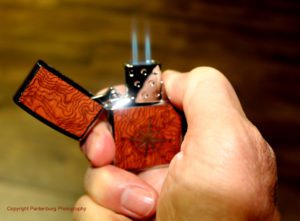
The Zippo butane lighter features two intense flames. The button must be kept pressed down for the flame to stay lit.
IMHO, the Zippo wasn’t broken, so why fix it? Since its invention Zippos have been sold around the world and have been described as “a legendary and distinct symbol of America”. In 2012 the company produced the 500-millionth unit.
Well, the latest Zippo version is a butane lighter. It uses the standard Zippo case, and retains the distinctive “click” when opened. The lighter puts out intense flames, and it will be excellent for lighting cigars and pipes. But this new version creates a set of survival firemaking issues you need to know about before buying one.
The Achilles heel of any butane lighter is temperature. The boiling point of Butane is approximately -0.5 C at sea level, according to answers.com (This boiling point will drop with an increase in altitude given the reduced pressure).
This means that as the lighter nears freezing, less gas will be vaporized inside of the lighter and will make it hard to light. And the higher in elevation you are, the less chance you have for ignition!
This time varies on the size, brand, and make of the lighter. My experiments show that placing a BIC mini butane lighter in ice water (33 degrees) disables it almost instantaneously. If the lighter is removed from a one-minute ice water bath, and placed in a 70 degree area, several minutes will pass before it is warm enough to function. If you warm the lighter in your already warm hand, it can take at least 90 seconds under ideal conditions, and probably closer to four minutes, to make it functional.
So, if you fall into an icy river, wade to shore and desperately need to make a warm-up fire, your butane lighter won’t work for what seems like an eternity. In a situation where your hands are freezing, you may not be able to warm the lighter quickly. Your cold, numb fingers may not be able to work the wheel, either. By the time the lighter is warm enough to fire, you may not be able to use it.
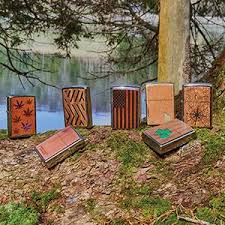
The Zippo Woodchuck partnership promotes planting trees and protecting forests.
To keep the flame going, the button on the Zippo butane must be kept pushed down. The strong point of the traditional Zippo was that once the flame got started, no further manipulation was needed.
And don’t forget this: if you inadvertently drop a butane lighter into a campfire, an explosion will follow!
That said, I traditionally carry three BIC mini lighters with me in the wilderness: One in my pants pocket, another in a jacket pocket and the third in my pack. (Here is how to modify one for survival fire making.) But I also carry a complete fire making kit that should enable me to start a fire anywhere.
The new Zippo butane lighter has several things going for it:
- The traditional case protects the lighter from sand, dirt etc. while still being reasonably water tight.
- The size has been proven to be popular and easy to carry.
- A butane refill will last longer than the standard Zippo with lighter fluid.
- All Zippo windproof lighters are American made in Bradford, Pennsylvania.
Zippo has partnered with WOODCHUCK USA to create wooden laser-cut emblem designs that will help restore and protect the forests of the world. For each lighter purchased, a tree is planted. Each one comes with a unique code to learn about your tree. The designs are finished on Brushed Brass, Brushed Chrome, High Polish Green, Street Chrome™, Herringbone Sweep and Multi Color. The emblems used are Cedar, Mahogany, Walnut and Birch.
Anyone who ventures off the pavement needs reliable firemaking tools. There is no single item that can guarantee starting a fire in any situation, but a Zippo can cover many bases. Get one, keep it fueled, and include it in your gear.
Please click here to check out and subscribe to the SurvivalCommonSense.com YouTube channel – thanks!

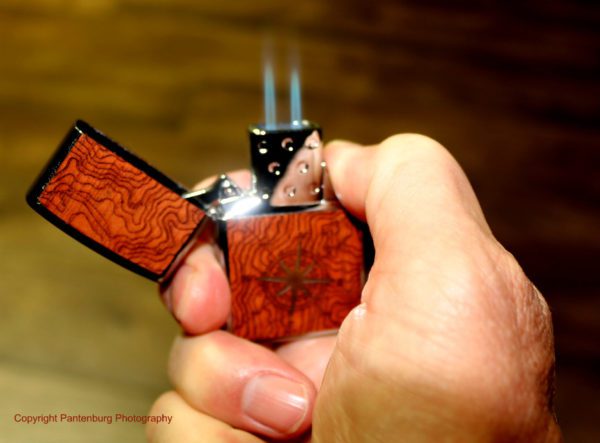

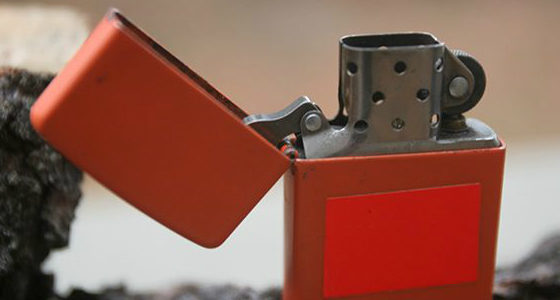
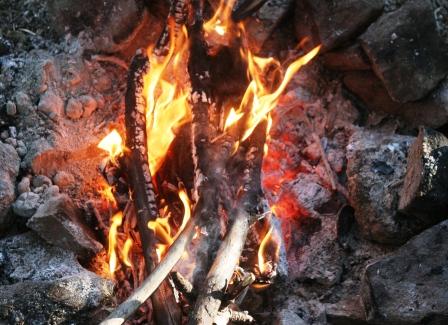
Leave a Reply